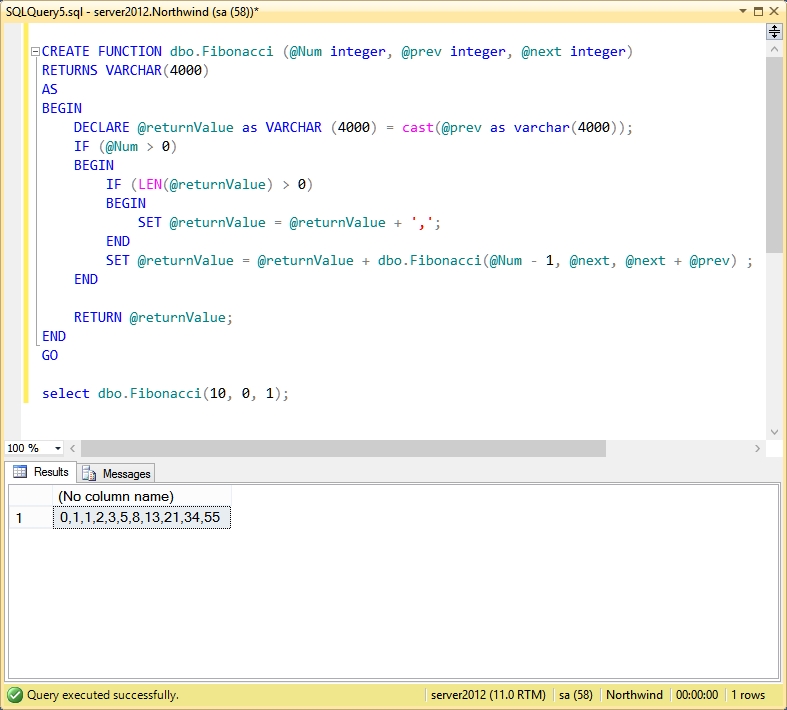In my Common Table Expressions presentation the topic of recursion often comes up, but for scalar functions in T-SQL, it might not be as common.
This article has been written to show how a scalar function in SQL Server can call itself, thus being considered recursive.
The example uses a recursive scalar function to calculate the Fibonacci sequence.
What is the Fibonacci Sequence
The Fibonacci Sequence is a classic example that is used to demonstrate recursion.
By definition, the first two numbers in the Fibonacci sequence are 0 and 1, and each subsequent number is the sum of the previous two.
Fibonacci Sequence as a Computer Science Challenge
Often times calculating the Fibonacci Sequence is used as a computer science puzzle, or programming interview question to see if you understand recursion. It is very simple to do in any programming language that supports recursion.
What is Recursion
Recursion is a programming concept where a function, procedure or section of code calls itself. For instance in the following T-SQL example, the scalar function Fibonacci calculates the Fibonacci sequence using recursion, by calling itself. This is accomplished by calling the function name inside of the body of the function.
CREATE FUNCTION dbo.Fibonacci (@Num integer, @prev integer, @next integer) RETURNS VARCHAR(4000) AS BEGIN DECLARE @returnValue as VARCHAR (4000) = cast(@prev as varchar(4000)); IF (@Num > 0) BEGIN IF (LEN(@returnValue) > 0) BEGIN SET @returnValue = @returnValue + ','; END SET @returnValue = @returnValue + dbo.Fibonacci(@Num - 1, @next, @next + @prev) ; END RETURN @returnValue; END GO
To call the function you simply include in a select statement, with the first parameter being the number of Fibonacci numbers to calculate, and the second and third parameters are always 0 and 1. The second and third parameters are set to 0 and 1 to prime the recursive function, and are used internally to pass the recursive call the current and previous values.
select dbo.Fibonacci(10, 0, 1);
Which produces the following output using SSMS:

For more details on the CTE version of Fibonaci take a look at my earlier post.
Enjoy!
More from Stedman Solutions:

Steve and the team at Stedman Solutions are here for all your SQL Server needs.
Contact us today for your free 30 minute consultation..
We are ready to help!